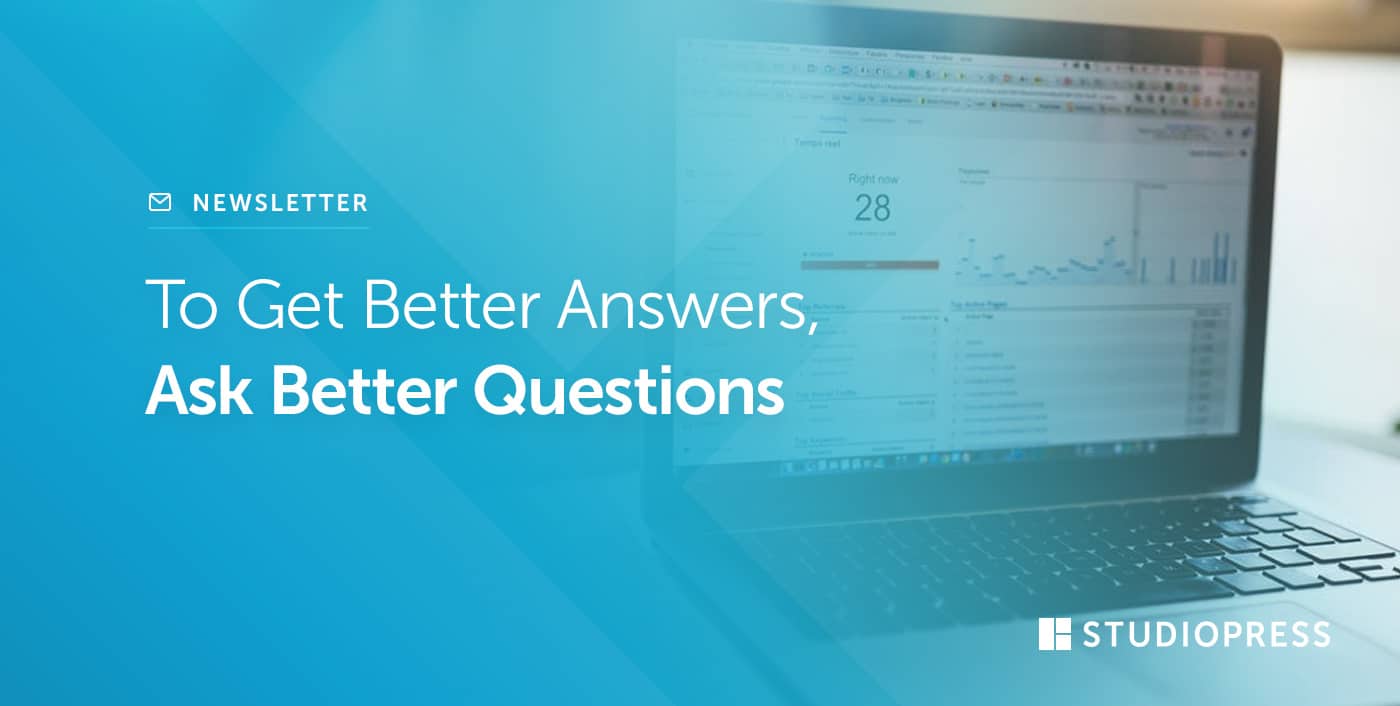Welcome to the first edition of Sites — the weekly newsletter that delivers hand-picked resources to help you create and maintain a powerful WordPress website.
We’ll keep things simple: four links per week to read, consider, and possibly act on.
My goal for each edition of Sites is for you take away one new idea or tactic you can implement right away that will help you take the next step in building your best website.
Let’s get to this week’s links …
Strategy: To Get Better Answers, Ask Better Questions
Data is such a fundamental element of a smart web strategy, but it’s so easy to mess up.
We have to know what is important to measure, how to measure it, where to get the measurements, when to look at the measurements, who needs to know the measurements, and, of course, never lose sight of why we’re going to all this trouble in the first place … which is to get answers.
Answers that we can base decisions on, which hopefully lead to improvement.
But improvement in what? Traffic? Engagement? Conversions? Revenue? Profit? Everything?
Clearly it’s not just answers we’re looking for, but the right answers. And that means asking the right questions.
Here are five fundamental questions to get you started:
5 Questions to Ask When Approaching Digital Analytics Data
Content: The ethical way to obtain an unfair advantage
Since this is the first edition of Sites, I decided I should kick it off with one of my favorite Copyblogger posts ever. It’s a post by Brian Clark that has stuck with me ever since I first read it, and one that I refer back to regularly.
It’s all about the audience — the immense value of building your minimum viable audience.
A value so immense that it really is an unfair business advantage.
5 Ways a Minimum Viable Audience Gives You an Unfair Business Advantage
Design: Are your visitors’ eyes playing tricks on them?
Answer: yes. And the impact of these tricks is that what you think will lead to balanced web page design (e.g. equal padding on all sides of a button) actually won’t.
So ask yourself: who are you designing for? Rulers and grids? Or real people with real eyes?
Because if it’s the latter (and, of course, it should be), then your visitors might not be seeing exactly what you think they’re seeing.
Making Your Design Optically Perfect
Technology: How to avoid being penalized for pop-ups and interstitials
I used to be stridently against pop-ups. Sure, I recognized that they achieved their goal of increasing opt-ins, but I loathed their intrusiveness. So I avoided them on all of my websites.
But one day, feeling audacious, I decided to try them. To my pleasant surprise, they were more successful than I thought and less intrusive than I feared.
Since then, I’ve been a vocal proponent of using pop-ups to drive conversions. But with Google recently announcing a crackdown on pop-ups and interstitials, we all need to make sure we’re not sacrificing so much on the SEO side that the increase in conversion rate brings with it a drastic reduction in overall traffic.
7 Tips for Using Pop-ups Without Harming Your SEO
Which of the ideas in these posts will you take and put to good use immediately?
I’ll be back with a new edition next week.
Keep building.

